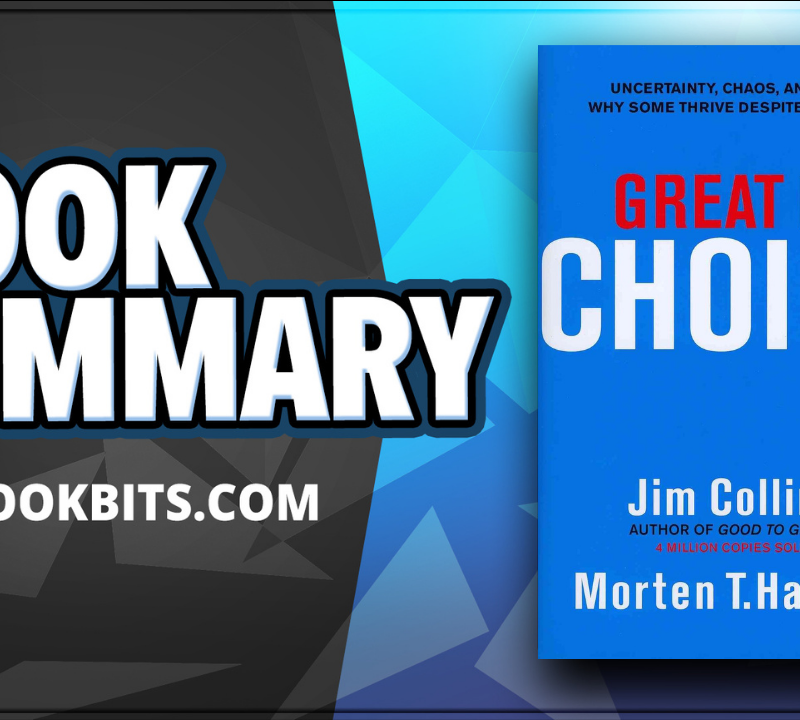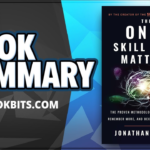★DOWNLOAD THIS FREE PDF SUMMARY HERE https://go.bestbookbits.com/freepdf
? MY FREE BOOK TO LIVING YOUR DREAM LIFE” https://go.bestbookbits.com/first-seven-steps
? SPONSOR BESTBOOKBITS BY USING PATREON https://www.patreon.com/bestbookbits
? SUPPORT BESTBOOKBITS BY CLICKING THE LINKS BELOW
150 PDF Summaries: https://go.bestbookbits.com/150
Coaching Program: https://go.bestbookbits.com/coaching
Subscribe to My Channel: https://www.youtube.com/bestbookbits?sub_confirmation=1
Website: https://bestbookbits.com
Instagram: https://www.instagram.com/bestbookbits
Spotify: https://open.spotify.com/show/0q8OW3dNrLISzyRSEovTBy
Facebook: https://www.facebook.com/michaelbestbookbits
Book Club: https://bestbookbits.com/bookclub/
Mailing List: https://mailchi.mp/d1dfc1907cdb/bestbookbits
In The World is Flat, Friedman takes a fresh look at the inter-connectedness of the modern world, and explores the implications of the changes brought on by huge improvements in communications technologies. These technologies, he argues, have levelled the economic playing field around the world, making it flat. He also points to a slew of other causes, from the fall of the Berlin Wall to the rise of the Internet, as sources of this flatness — developments that are making it easier with every passing day for people all over the world to work together … or compete against each other.
Friedman’s 1999 bestseller, The Lexus and the Olive Tree, provided much of the intellectual foundation for his latest book. “The first big book on globalization that anybody actually read,” as Friedman describes it, helped make him a fixture on the international conference circuits. It also made Friedman a lightning rod for some political activists, including members of the anti-globalization movement.
After 9/11, Friedman took a temporary hiatus from writing about issues of globalization. He spent the next three years traveling the Arab world trying to get at the roots of the attack on the United States, and his columns on the aftermath of 9/11 earned him a Pulitzer Prize. But Friedman soon realized that while he was writing about terrorism, he was missing an even bigger story: Globalization had gone into overdrive. So in late 2004, Friedman offered-up The World Is Flat to share his current thinking on the subject.
To help put the finishing touches on his book, Friedman enlisted some impressive editorial assistance. Bill Gates spent a day with him to critique the theory. Friedman also presented sections of the book to the strategic planning unit at IBM, and to Michael Dell. The rare insights he gained from these conversations are peppered throughout the book.
Throughout all of the interviews and anecdotes, Friedman’s unique brand of sober optimism shines through. He clearly wants to tell us how exciting this new, flatter world will be. But he also wants us to understand that we’re going to be trampled if we don’t keep up with it, and take ownership of this great challenge. So without further adieu, let’s jump into Friedman’s explanation of how the flattening of the world happened at the dawn of the twenty-first century; what it means to countries, companies, and individuals; and hear Friedman’s advice on how governments and societies can, and must, adapt.
It’s a Flat World After All …
The first chapter of Friedman’s book is set in Bangalore, birthplace of India’s high-tech economy. There we learn about highly educated workers who are thriving on “outsourcing” from American businesses — not just call center operators, but accountants who know all your local tax regulations, executive assistants who will research and prepare your next PowerPoint presentation, software designers, and aircraft engineers.
It’s no coincidence that the opening chapter is set in India. It was in India that Friedman experienced his “ah-ha” moment. That is to say, Friedman’s discovery of the world’s “flatness” first came to him a few years ago when he was interviewing a gentleman named Nandan Nilekani, the CEO of one of India’s largest high-tech companies. The Indian entrepreneur remarked to Friedman: “Tom, the playing field is being leveled,” and Friedman says these words hit him with the force of a revelation. “What Nandan is saying,” Friedman thought to himself afterwards, “is that the playing field is being flattened…. Flattened? Flattened? My God, he’s telling us the world is flat!”
And so Tom Friedman wrote a book that explores how the world got flattened, and then offers a prescription for what we in North America should do about it.
Welcome to “Globalization 3.0”
Although at times it may seem like the world got flat almost over night, that’s not exactly the case. According to Friedman, globalization has so far gone through three distinct phases. With each phase of globalization, the world became just a tiny bit flatter. But today, with the explosion of new technologies, the flattening process is in overdrive.
Friedman explains that the first phase of globalization took place from 1492 to 1800, during which European countries opened up trade with each other, and with the New World. This first phase was largely driven by military expansion, and success depended on the amount of raw manpower and horsepower countries could employ.
The second phase was from 1800 to 2000, where multi-national corporations drove global integration. The dominant technologies were railways and autos. As mentioned earlier, The Lexus and the Olive Tree, focused on the world at the tail end of that era.
In the current phase — which Friedman terms “Globalization 3.0” — individuals, as opposed to countries or multi-national corporations, are now the key driving force. And the defining technology of our era is a worldwide network of fiber-optic cable, capable of transmitting reams of electronic data from one end of the globe to the other in seconds.
In a rare interview, Marc Andreessen, the creator of the world’s first commercial Internet browser, spoke about the virtues of Globalization 3.0: “Today, the most profound thing to me is the fact that a person in Romania or Bangalore or Vietnam has all the tools they need to apply knowledge however they want,” said Andreessen. “So as key fields like medicine and bioscience are becoming more computational and less about doing work in actual labs — and as genomic data becomes easily available on the Internet — at some point you will be able to design new vaccines on your laptop.”
Andreessen is touching on one of the most exciting parts of Globalization 3.0, and the flattening of the world in general — the fact that we are now connecting all of the knowledge pools in the world together. We are on the cusp of an incredible new era of innovation, an era that will be driven from West and East, and from North and South.
Bill Gates explains the meaning of this transformation best. Thirty years ago, he told Friedman, if you had to choose between being born a genius in Mumbai or Shanghai, or an average person in Poughkeepsie, you likely would have chosen Poughkeepsie because your chances of living a prosperous and fulfilled life were much greater there. ”Today,” Gates says, ”I would much rather be a bright A student born in China than an average student born in Poughkeepsie.” The barriers to entry have almost disappeared.
★DOWNLOAD THIS FREE PDF SUMMARY HERE https://go.bestbookbits.com/freepdf
? MY FREE BOOK TO LIVING YOUR DREAM LIFE” https://go.bestbookbits.com/first-seven-steps
? SPONSOR BESTBOOKBITS BY USING PATREON https://www.patreon.com/bestbookbits
? SUPPORT BESTBOOKBITS BY CLICKING THE LINKS BELOW
150 PDF Summaries: https://go.bestbookbits.com/150
Coaching Program: https://go.bestbookbits.com/coaching
Subscribe to My Channel: https://www.youtube.com/bestbookbits?sub_confirmation=1
Website: https://bestbookbits.com
Instagram: https://www.instagram.com/bestbookbits
Spotify: https://open.spotify.com/show/0q8OW3dNrLISzyRSEovTBy
Facebook: https://www.facebook.com/michaelbestbookbits
Book Club: https://bestbookbits.com/bookclub/
Mailing List: https://mailchi.mp/d1dfc1907cdb/bestbookbits
The Ten Flatteners
The exponential flattening of the world we’re seeing today in Globalization 3.0 is a direct result of ten events and forces that all converged right around the year 2000:
- The first event was November 9, 1989 — the day the Berlin Wall came down. Freidman sees this as a critically important date because, for the first time in modern history, it enabled people to begin thinking of the world as a single space.
- The second key date was August 9, 1995, the day Netscape — the first commercial Internet browser — went public. This brought the Internet alive by giving us a badly needed tool to display images and data stored on Web sites.
Moreover, says Friedman, the Netscape IPO also triggered the dot-com boom, which led to the dot-com bust, which triggered a massive overinvestment of billions of dollars in fiber-optic telecommunications cable. That overinvestment, by companies like Global Crossing, resulted in the commercially reckless laying of a global undersea fiber-optic network, which in turn drove down the cost of transmitting data overseas to practically zero, which in turn accidentally made Boston and Beijing next-door neighbors, almost overnight. Suddenly more people could connect with more other people from more different places than ever before.
The first time this became apparent was when thousands of Indian engineers were enlisted to fix the Y2K computer bugs for companies from all over the world. The fact that the Y2K work could be outsourced to Indians was made possible by the first two flatteners described above, along with a third, which Friedman calls “workflow.”
- Workflow — the third great flattener — is another word for all the software applications that help connect all the computers and fiber-optic cable. To put it another way, if the other trends basically connected people to people, what the workflow revolution did was connect applications to applications so that machines all over the world could work together in manipulating and shaping words, data and images like never before.
Those breakthroughs in “people-to-people” and “application-to-application” connectivity produced, in short order, six more flatteners — six new ways in which individuals and companies could collaborate on work and share knowledge.
- The fourth flattener was “outsourcing.” In this era, all kinds of work can be digitized and shifted to any place in the world where it can be done faster and cheaper.
- The fifth was “off-shoring.” Simply put, that’s when businesses send a whole factory overseas. This continues to be a cause of great consternation in the United States.
- The sixth was “open-sourcing.” Open sourcing occurs when high-minded software engineers collaborate together online, and create new value for free.
- The seventh was “in-sourcing.” In-sourcing happens when you let a well-run company like FedEx or UPS come inside your company and take over your whole logistics operation — everything from filling your orders online to delivering your manufactured goods, to repairing them for customers when they break.
- The eighth flattener was “supply-chaining.” This is Wal-Mart’s specialty. Imagine creating a global supply chain that’s so efficient that if you sell a pair of shoes in Arkansas, another pair is immediately made in China. That’s just what Wal-Mart did.
- The ninth flattener was a new form of collaboration that Friedman calls “informing.” These are the search engines like Google, Yahoo and MSN Search, which now allow anyone to find and access virtually unlimited piles of data, data all by themselves.
- The tenth and final flattener is what Friedman calls “the steroids,” which include voice-over-Internet and wireless Internet access. Basically, what wireless does is it turbo-charges all of the new forms of collaboration, so you can now do any one of them, from anywhere, with an ever-expanding array of tiny handheld devices.
So, in summary, Friedman’s first three flatteners created a new platform for collaboration, and the next six are the new forms of collaboration that flattened the world even more. And the world became flat when all 10 of these trends converged around the year 2000. This created a global, Web-enabled playing field that allows for multiple forms of collaboration in real time, without regard to geography, distance or language.
While some of these factors may seem less decisive than others, Friedman nonetheless reminds us how different things were just a few years ago. That alone is eye opening.
How to Compete in a Flat World
It’s clear that the flattening of the world is creating profound challenges, as well as opportunities, for those of us in North America. It’s a watershed moment in our history.
“If this moment has any parallel in modern history,” writes Friedman, “it is the height of the Cold War — around 1957 — when the Soviet Union leapt ahead of America in the space race by putting up the Sputnik satellite.” Of course, the main challenge at that time came from those who wanted to put up fences and walls. The main challenge we face today comes from the fact that all the walls are being taken down and many other people can now compete with us much more directly. The main threat we faced at that time was from those practicing extreme Communism, namely Russia and China. The main threat today is from those practicing extreme capitalism, namely China and India.
In Friedman’s view, meeting the challenges of a flat world requires just as energetic and focused a response as did meeting the challenge of Communism a generation ago. In other words, it requires political leaders who can summon the nation to work harder, get smarter, attract more young people to science and engineering, and build the broadband infrastructure, portable pensions and health care that will help every citizen become more employable in an age in which no one can guarantee lifetime employment.
Admittedly, the challenges of competing in a flat world are markedly different than those formerly presented by the threat of Communism. For starters, today’s challenges don’t exactly involve nuclear missiles aimed at our cities. It is more of a quiet crisis this time around, but in Friedman’s estimation, that doesn’t make it any less real, or less pressing. As he makes the rounds on the American talk show circuit, and in other forums, Friedman has made it his personal mission to draw the nation’s attention to this threat.
Of course, in order deal effectively with the quiet crisis, we must first understand its roots. Friedman believes the crisis is a product of three gaps currently plaguing North American society. The first is an ”ambition gap.” Compared with the young, energetic Indians and Chinese, too many people in the West have simply gotten lazy. Or, as David Rothkopf, a former official in the Clinton Commerce Department, explained to Friedman: “The real entitlement we need to get rid of is our sense of entitlement.”
Second, Friedman argues we have a serious “numbers gap.” We are not producing enough engineers and scientists. The United States and Canada used to make up for that by importing them from India and China, but in a flat world, where people can now stay home and compete with us, and also in our post-9/11 world with all its security concerns, we can no longer rely on immigration to cover the gap.
And finally, Friedman argues we are experiencing an education gap. “There’s a dirty little secret that no CEO wants to tell you,” he says. “Companies are not just outsourcing to China and India to save on salaries and benefits. They are doing it because they can often get better-skilled and more productive people than their North American workers.”
Friedman’s prescription is obvious — we need to get our kids back to basics immediately. It’s time to turn off the TVs and the Game Boys and focus on schoolwork and entrepreneurship. The tidal wave is coming straight for us, and there’s no way to stop it!
When Friedman was growing up, his parents used to say to him: “Tom, finish your dinner; people in China are starving.” Today, Friedman is now telling his own daughters, “Girls, finish your math homework — people in China and India are starving for your jobs.”
Conclusion
Over the past 15 years, Tom Friedman’s writing has influenced presidents, policy-makers and captains of industry all around the world. His newspaper columns reach millions each day, and he has firmly established himself as a leading cultural pundit.
Admittedly, the material Tom Friedman likes to work with can be a bit dense at times. Globalization is heavy-duty subject matter, and it can be dreary stuff if you’re not careful. But Friedman has clearly found a way to make it fun.
Here are two final examples. Did you know that when you order a burger at the drive-through McDonald’s on Interstate 55 in Missouri, the person taking your order is at a call center 900 miles away in Colorado? Or that when you call Jet Blue for a reservation, you may be talking to a housewife in Utah, doing the job from her living room part-time? By using real-life examples likes these to illustrate complex global concepts and trends, Friedman is able to get his message across in a way that appeals to most readers.
Whether he’s in Boston, Bangalore or Beijing, Friedman asks brilliant questions of everyone he encounters. The lessons he distills from their responses brings a new perspective to the ways in which everyone from CEOs, to religious radicals, to entrepreneurs and garden-variety consumers, are all creating ripples in their own particular ways. Regardless of what your political beliefs may be, or where you may think you fit into the overall equation, Friedman shows us that we all have an undeniable stake in globalization. There’s simply no escaping it: the world is getting flatter every day.
★DOWNLOAD THIS FREE PDF SUMMARY HERE https://go.bestbookbits.com/freepdf
? MY FREE BOOK TO LIVING YOUR DREAM LIFE” https://go.bestbookbits.com/first-seven-steps
? SPONSOR BESTBOOKBITS BY USING PATREON https://www.patreon.com/bestbookbits
? SUPPORT BESTBOOKBITS BY CLICKING THE LINKS BELOW
150 PDF Summaries: https://go.bestbookbits.com/150
Coaching Program: https://go.bestbookbits.com/coaching
Subscribe to My Channel: https://www.youtube.com/bestbookbits?sub_confirmation=1
Website: https://bestbookbits.com
Instagram: https://www.instagram.com/bestbookbits
Spotify: https://open.spotify.com/show/0q8OW3dNrLISzyRSEovTBy
Facebook: https://www.facebook.com/michaelbestbookbits
Book Club: https://bestbookbits.com/bookclub/
Mailing List: https://mailchi.mp/d1dfc1907cdb/bestbookbits













